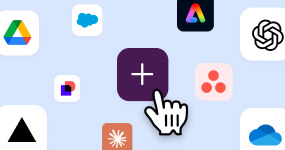Data from the Slack Workforce Index shows that AI boosts productivity among desk workers, yet less than two-thirds of desk workers have tried AI at work.
Across research in the behavioral sciences, there is strong evidence that our emotions directly influence whether we adopt new behaviors. But what do we really know about how desk workers feel about using AI at work? To answer this question, I conducted in-depth interviews with desk workers across the U.S.
Here are three key takeaways from what I learned.
Feelings about using AI at work are dynamic and social
Desk workers often experience multiple conflicting emotions when using AI at work. For example, I spoke with an HR consultant who described feeling both intimidated and resourceful when she realized she could use AI to help draft a work brief. While she found the process of engaging with AI to be moderately pleasant enough, she was most satisfied with the time AI helped her save. However, she also felt guilty and nervous about what would happen if her boss found out that she used AI to help compose the brief.

Journey map reflecting common emotions felt using AI at work. Responses varied by participant and type of work task.
Many interview subjects expressed similar uncertainty about how others would perceive their AI use.
“When I’m trying to figure out if I should use AI for a task, I think about is this task something that if my boss found out I was using AI, they would they think they could replace me?” – product manager
Ambiguity over how one might be judged for using AI at work was a consistent source of mixed emotions.
AI may be more efficient, but it’s less authentic
Many of the desk workers I spoke with wrestled with questions about authenticity — when does using AI mask or obscure their unique voice and point of view, and when is that a problem?
“On the one hand I’m feeling super-resourceful for using AI — but it’s also not 100% yours. Part of it is pieces of the interweb somewhere.” – consultant
Across my interviews, it was clear that workers held varying (or even opposing) perspectives on acceptable AI use cases. AI was especially controversial for writing personal messages; many employees said that AI-generated communication felt inauthentic, both to send and to receive.

To build positive organizational norms, leaders should make AI usage more visible
While emotions are key drivers of future behavior, we know that social and organizational norms also play an influential role.
Workplace behaviors are reinforced through watching others. At the same time, AI use is often invisible in the workplace. Participants shared that they were not sure if and how their colleagues are using AI.
“I think there should be guidelines around what’s accepted and what’s not accepted, to give people something to work with. Because I kind of feel like I just went rogue. But I’m assuming other people are doing the same thing, because they have similar work.” – HR consultant
If workplaces want to reassure employees that they don’t need to feel guilty for using AI, then leaders should focus on making AI usage more visible and normative.
Steps to take action
The Slack Workforce Lab has developed an AI persona quiz based on these in-depth qualitative interviews and quantitative findings from a survey of over 5,000 desk workers. Check out how you can use the quiz as an AI team building exercise to understand where employees are on their AI journey and to start setting team-level expectations for AI usage.
– Marcia Ash is a behavioral science researcher and summer 2024 intern at Slack






